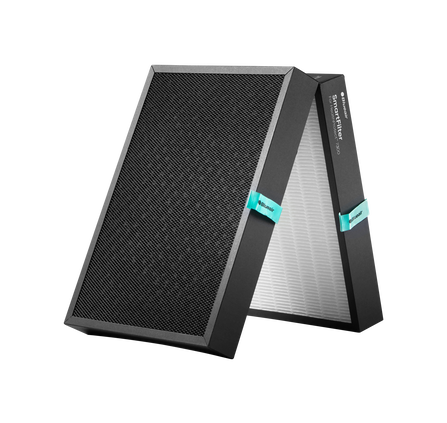Pollution & Air Quality A-Z Glossary
Air quality consultants tend to use a lot of specialist terminology and acronyms when discussing pollution and air quality. This post is an essential A-Z glossary to help you understand various aspects of air pollution and quality.
Want to learn more about air purifiers and filtration? Be sure to check out our air purifier and filter buying guide A-Z.
Air Monitoring
An air quality monitoring technique in which consultants take a number of samples over a set period of time, to monitor how the air quality in an environment may change across this time. Read our full guide to air monitoring techniques.
Air Pollution
Air is considered polluted when it contains potentially hazardous levels of solid particle and chemical pollutants. Read our full guide to the sort of particles and chemicals that can pollute air supplies.
Air Quality
A measure of the relative purity of air. High quality air contains low levels of solid particle and chemical pollutants.
Air Quality Index
A real-time snapshot of the relative air quality in a given area, along with factors that might affect pollution levels (such as temperature and wind direction), and any current alerts and warnings. You can see an air quality index for the UK.
Air Sampling
An air quality monitoring technique in which consultants take a sample of the air in an environment. This provides a snapshot of the air quality in a given area as it was at that time. Read our full guide to air monitoring techniques.
DEFRA
The UK Government’s Department for Environment, Food and Rural Affairs. DEFRA releases periodic air pollution forecasts, along with health advice and air pollution alerts. View an up-to-date DEFRA forecast.
Emissions
A general term for certain types of air pollution, referring to “emissions of air pollutants”. Examples include road traffic, natural fires, and certain industrial, construction and agricultural processes. You can read a DEFRA summary of UK air pollution emissions.
European Environment Agency
A European Union agency that provides independent information about environmental matters including air quality and air pollution. Learn more about the European Environment Agency.
Hazardous and Toxic Air Pollutant
Any pollutant found in the air which is known or suspected to be harmful to health and the environment. Examples include particulate matter, nitrogen oxide, ammonia, non-methane volatile organic compounds, and sulphur dioxide. Read our complete guide to hazardous and toxic air pollutants.
HEPA Filter
High-efficiency particulate air filter, capable of trapping up to 99.97% of all airborne particles down to 0.1 microns. Read our full guide to what a HEPA filter is and how it works.
PM1
Particulate Matter (PM), a hazardous and toxic air pollutant. The number refers to the size of the particle in micrometres. PM1 contains particles with a diameter of 1 micrometre or smaller. Examples include smoke, bacteria, and pollen.
PM2.5
Particulate Matter (PM), a hazardous and toxic air pollutant. The number refers to the size of the particle in micrometres. PM2.5 contains particles with a diameter of 2.5 micrometres or smaller. Examples include dust and pet dander. As the particles are so small, when inhaled they can travel deep into your lungs and enter your bloodstream. Read our full guide to PM2.5.
PM10
Particulate Matter (PM), a hazardous and toxic air pollutant. The number refers to the size of the particle in micrometres. PM10 contains particles with a diameter of 10 micrometres or smaller, which includes viruses. Read our full guide to PM10.
PRTR
The UK Pollutant Release and Transfer Register. A UK inventory for pollution from industrial sources that’s released to the air, as well as to water and soil. Access the latest PRTR information.
Public Health England
A government body that analyses and advises on all aspects of public health in England. You can read their latest guidance on the effects of air pollution on human health.
Sick Building Syndrome
A large concentration of VOCs (see below) in an indoor atmosphere can lead to “sick building syndrome”. Anyone spending extended periods of time in such an environment may experience a number of symptoms, including headaches, fatigue, nausea, and eyes, nose and throat irritation.
UVC
UVC stands for ultraviolet C. This is a form of electromagnetic radiation with wavelengths between 200 and 290 nanometres. UVC light can kill viruses and bacteria in the atmosphere. Read our full guide to the use of UVC in air purification.
VOCs
Volatile organic compounds. An example of a hazardous and toxic air pollutant. Common sources of VOCs include combustion (such as smoking, heating, cooking and candle burning), petrol vapours, air fresheners, and cleaning products. Read our full guide to VOCs.
Want to Know More About Air Pollution and Air Quality?
We can help you improve the air quality in your workplace. Our exposure monitoring services can give you a reliable picture of the air pollution threats in your area, and we can advise on steps you can take to improve the air quality for everyone.
Get in touch to talk to one of our friendly air quality consultants today.



